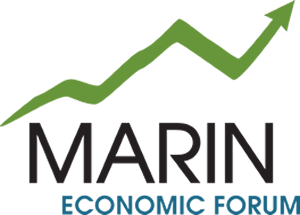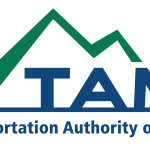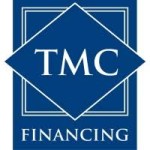Marin County economic booster group focusing on job growth in 2024
With a positive economy and high employment numbers dispelling fears of a recession, Marin Economic Forum members say the time is right to turn the spotlight on creating more jobs in the county.
The approximately 120 people who attended the annual Forecasting the Future 2024 program held at the College of Marin’s Indian Valley campus earlier this month included business, government, nonprofit and education leaders.
“Marin County has become an economic development leader based on the board of supervisors five-year Economic Vitality Strategic Plan developed in 2022 followed by the appointment of a full-time economic vitality coordinator in December,” said Mike Blakeley, CEO of the Marin Economic Forum.
“Our county’s economic fundamentals are strong, but most people don’t feel that way based on news in January of record layoffs in the Bay Area along with continuing high prices and interest rates along with reports that some states, such as Texas and Arizona, keep wooing away our firms.”
He said Marin needs more new businesses andwhile the county has many companies that serve the local market, a majority do not bring in revenue from outside this area.
The lack of affordable housing is also a drag on efforts to hire new workers, especially among those who cannot afford to live in Marin based on what some businesses can pay.
“We also need a future business pathway that will attract young job seekers. We must identify Marin’s selling points and why new firms should consider locating here. To better understand this issue, we work collaboratively with county and city governments, and a growing list of business partners, to determine what business attraction should look like in today’s market,” Blakeley said.
Robert Eyler, economics professor at Sonoma State University, presented a relatively optimistic forecast indicating business growth despite fewer payroll jobs, which suggests a rise in self-employed independent contractor jobs.
When it came to annual business applications in Marin County, the number went up to 3,250 in 2022, indicating entrepreneurial activity was underway, after a slow but steady rise from fewer than 1,800 applications in 2009.
“The need for business attraction raises several key questions,” Eyler said. “What types of businesses are starting and surviving? How are new businesses financing themselves, and does a workforce exist to prepare for specific types of businesses Marin County wants to attract and retain?”
Eyler revealed that the housing forecast percentage change for Marin County from December 2023 to December 2024 in selected areas showed a 1.7% decline for Marin compared with a 0.6% increase for the state.
“This says interest rates must fall to stimulate median home price growth in selected areas, resulting from a series of anticipated rate cuts set to begin later this year,” he said.
According to Haden Ongaro, North Bay market leader with Newmark Knight Frank and board chair of the Marin Economic Forum, the outlook for commercial real estate in Marin is relatively affordable when compared with San Francisco.
Ongaro cited an example that a 200-square-foot ready-to-occupy “spec space” — space built on speculation by developers believing that if they build it, tenants will come — is a popular choice for small businesses. He said tenants and job seekers are also increasingly looking for unique extras on site or near their workplace. .
“Tenants want space … with outdoor amenities for staff members where they can relax in seating areas, walk pets in a dog park, exercise or participate in group sports — bocce ball and volleyball courts, etc. Work locations walkable to restaurants and shops are also in demand, as well as sites with proximity to transit and closer to employees’ homes,” Ongaro said.
Then there’s the office space and large commercial structures being turned into affordable residential housing, as was the case with the 770,000-square-foot former Fireman’s Fund Insurance campus in Novato.
Another developer is adding 1,400 new housing units at Northgate Mall with the belief that well-placed housing alleviates the need for transportation.
“The unresolved question for real estate professionals today is whether hybrid work is truly a wave of the future, or if more employers will eventually want their people back at the work site,” Ongaro said. Hybrid work is partly in the office and remote.
As reported by Forbes in 2023, 12.7% of full-time employees work from home, while 28.2% work a hybrid model. The hybrid trend for some now means coming to the office an average of three days a week.
The phenomenon has implications when it comes to forecasting how much office space will be needed in the future, how many building permits will be approved over what time frame, and ultimately the amount of capital that will be required for new projects.
North Bay Business Journal special correspondent Gary Quackenbush (Gary.Quackenbush@gmail.com) was West Coast editor for Telecommunications Magazine, and later wrote for the Windsor Times and the Sonoma County Farm Bureau.
Be the first to receive updates and news from MEF by subscribing or liking us on our social media pages: Facebook, Twitter, and LinkedIn!
Tags: news














